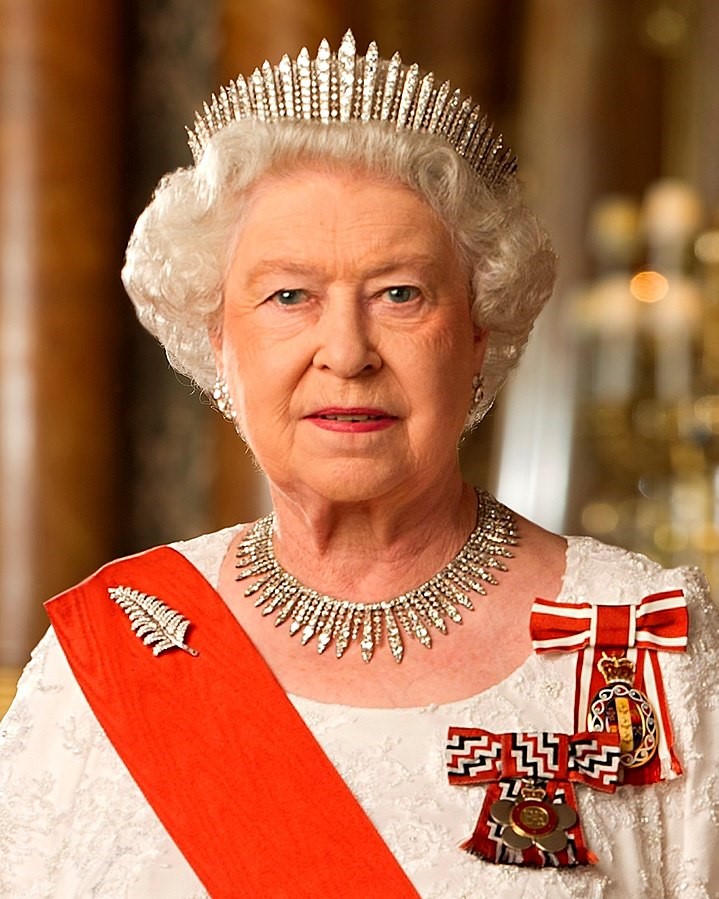
Photo: © BiblioArchives / LibraryArchives, CC BY 2.0
An era has ended. Queen Elizabeth II is dead, and the world mourns. We can say that the twentieth century officially ended as the last pillar of the postwar order fell.
The Queen had her defects. In remembering her, some decry many of her political decisions. Others point to the deplorable things that happened under her reign or the scandalous behavior of royal family members.
However, we must look beyond person and policy to understand her symbolic role in a chaotic world.
Elizabeth II was not just a political figure. She represented the ideal United Kingdom to the world. When she appeared on the balcony of Buckingham Palace, vast crowds of all persuasions stretched as far as the eye could see and would wildly acclaim her. Indeed, what presidents could claim such devotion and popularity from the people? Somehow, the Queen projected the image of a fairy-tale monarch that captured the imagination.
That was her most important role.
A Shining Representation
In those sublime moments of public contact, we could glimpse a brilliance that transcended her person. The British saw in her the symbol of their glory.
Eternal and Natural Law: The Foundation of Morals and Law
This shining, symbolic representation was one reason she was so beloved and esteemed. She was not known for her formulation of public policy or political agendas. Seeing her, however, the people saw something of themselves reflected. She knew how to take the qualities, virtues and convictions needed by the British people and give them expression. Her presence served to draw the nation together by being the distillation of what it meant to be British.
We need such symbols and ideals because they allow us to imagine the world as it should be. They give us a goal toward which to aspire, even though we realize that we will always fall short due to our fallen nature and the limitations of reality.

Thus, by living up to her role as a symbol, the Queen set the tone of society, influenced fashion and defined standards of excellence. Her Majesty reflected centuries of good taste, refinement, good manners and civility. She practiced the sacrifice of always appearing dignified and proper in public even when the rest of the world abandoned this much-needed sacrifice. Thus, she is remembered more as the ideal fairy-tale queen everyone imagined her to be than the person she actually was.
Representing Majesty
This ability to be a representative figure allowed her to exercise another role that is proper to her office. The Queen was also beloved and esteemed because she knew how to represent Christian majesty well.
The end of the State is the ordering of the common good, and thus those entrusted with authority exercise a supreme mission with intrinsic dignity and majesty. Since all authority comes from God, it should be surrounded by ceremony and splendor to better mirror the Divine majesty.
The Queen exercised her authority with calm and benevolent majesty. Indeed, her reign represented the remnants of medieval pageantry that gave her office authenticity, brilliance, vigor and dignity. She reminded the world of a splendorous Christian civilization rejected by modern vulgarity and egalitarianism.
This splendor contrasts with the demagoguery of clownish modern leaders who present caricatures of real authority. Most politicians follow Rousseauean models that imagine power coming not from God but the fickle whims of the popular will.
 Learn All About the Prophecies of Our Lady of Good Success About Our Times
Learn All About the Prophecies of Our Lady of Good Success About Our Times
The Queen sacrificed herself by living up to the dignity and majesty of her office. It filled her reign with beauty and stability. Until the last days of her life, she carried out her duties with touching self-abnegation, solicitude and affection. Her beloved reign endured for over seventy years, during which she saw 15 prime ministers, 14 presidents and seven popes in office.
A Queen Beyond the United Kingdom
We live in a postmodern egalitarian world that detests everything the Queen represented. Political leaders today no longer want the arduous task of being a symbol. They are no longer capable of representing the sublime aspirations of their respective peoples or want to display the majesty and dignity of their offices. Even the surviving royals cannot live up to her standard of dedication and excellence.
The Queen stood out because few leaders today think beyond their self-interests. We are left as orphans inside a world political order that does not represent us or present us with sublime ideals.
Everywhere, many crave those symbols and ideals that give meaning and purpose to political and social life. Thus, the Queen was loved and esteemed far beyond the United Kingdom and the Commonwealth’s 2.3 billion people. All those orphans who yearned for the ideals she represented could find in her a queen they could call their own. In a world filled with vulgarity and narcissism, they could always look to her and ask that God Save the Queen—that ideal Queen representing a splendorous and dignified world. These orphans looked to her simply as the Queen.
Thus, it was not only the United Kingdom’s Queen who died on September 8 but also the Queen of all who saw her as a symbol of order, albeit imperfect, in a world in chaos and disarray.
We mourn because a great pillar of devotion to duty, grace and majesty has fallen, and there is no one to take her place.

